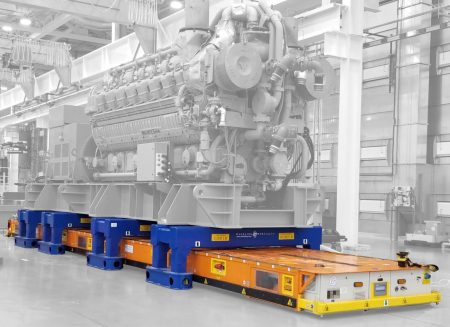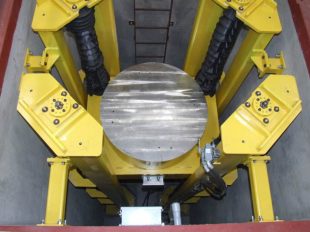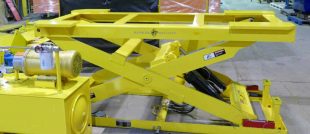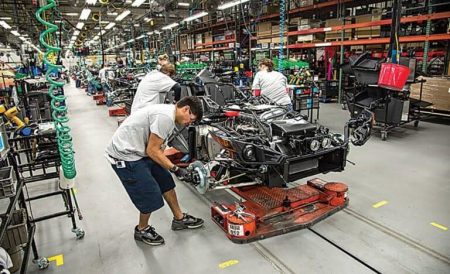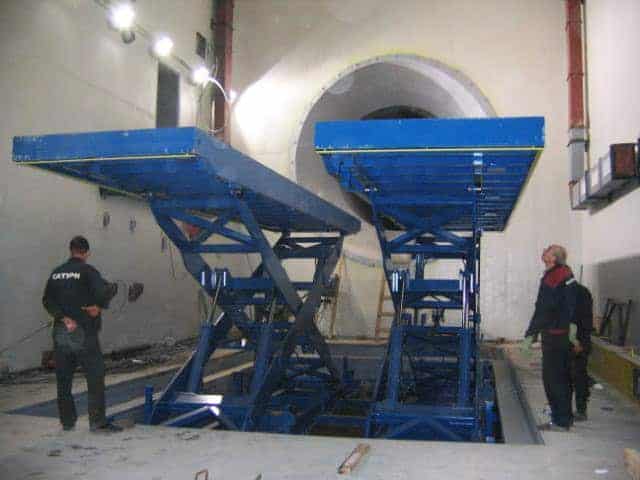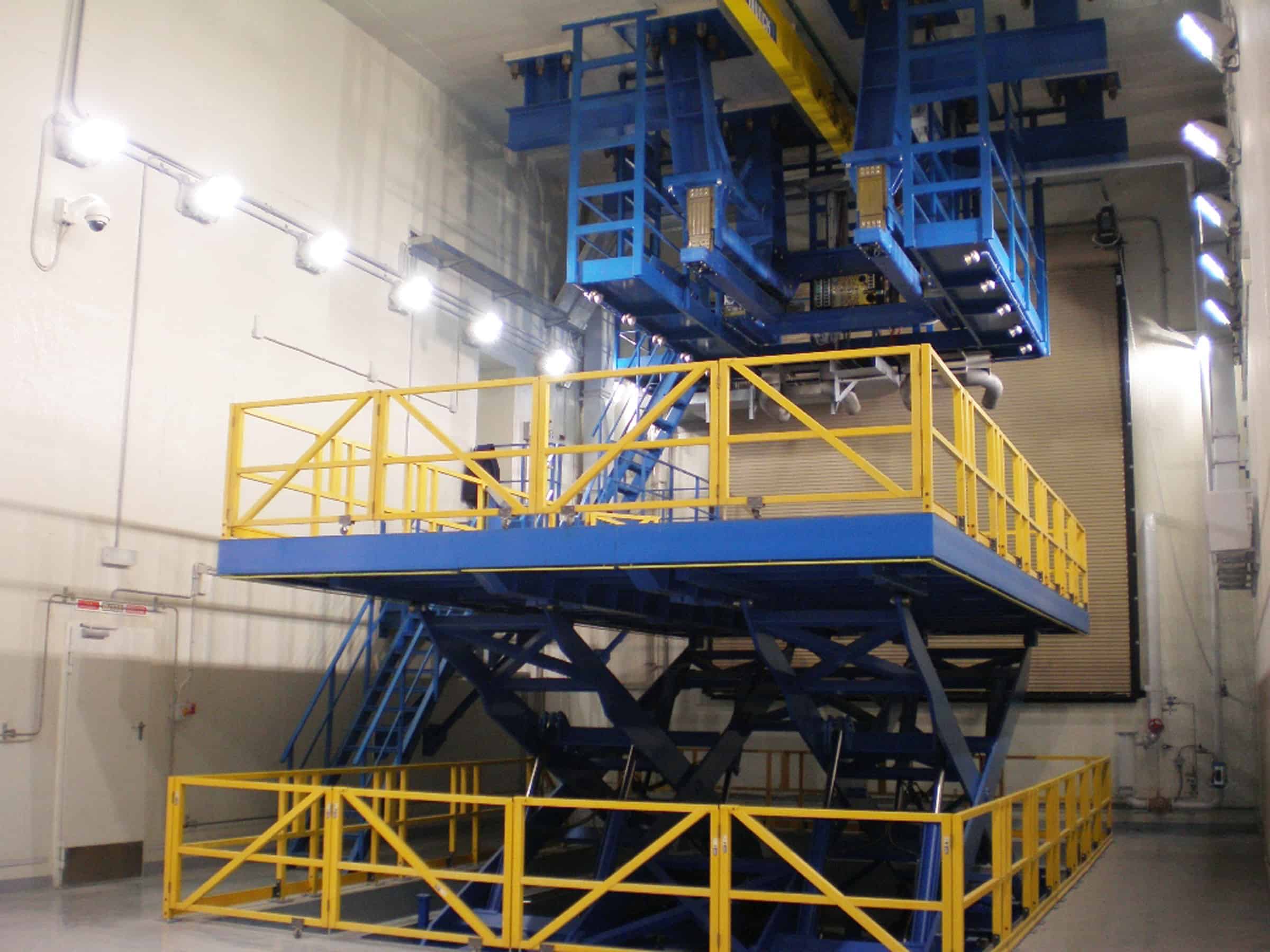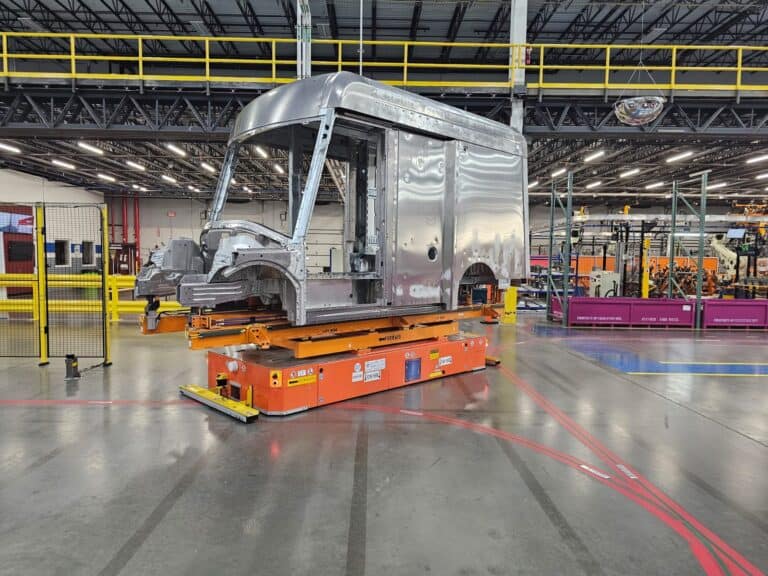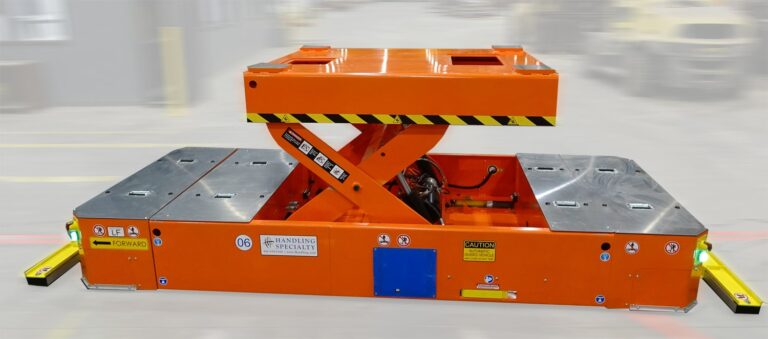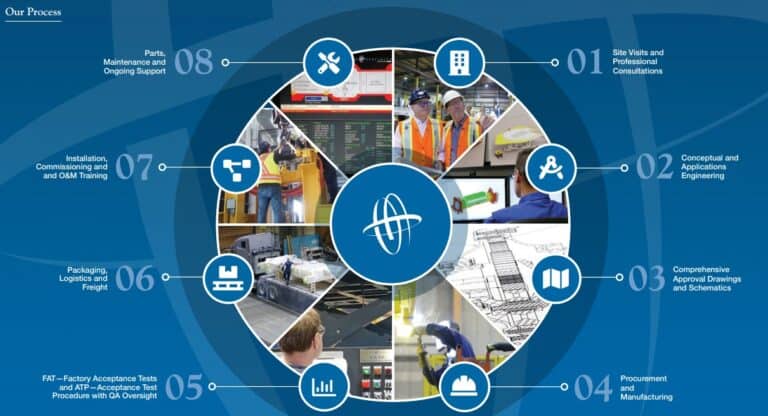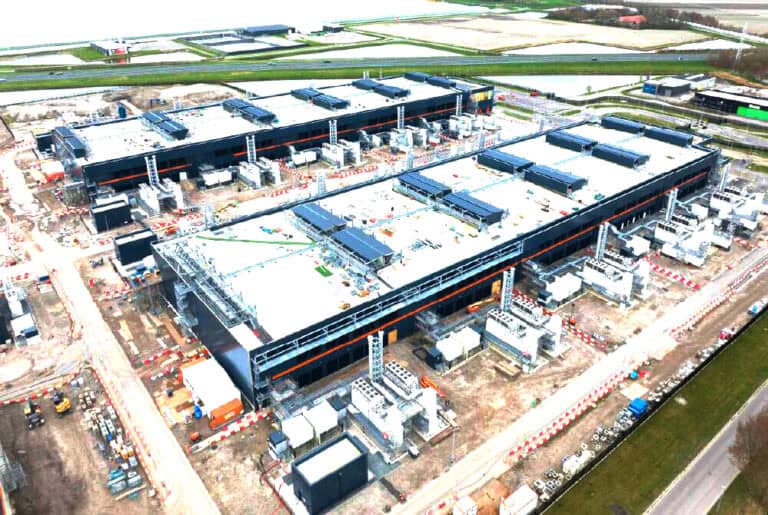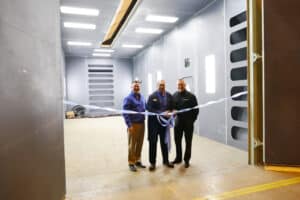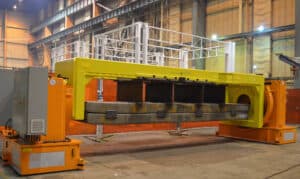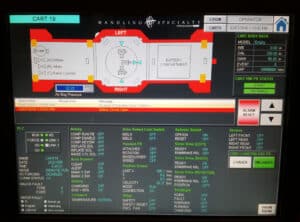Heavy-duty scissor lifts provide a stable platform for aerospace engine tests. These lifts are made to handle the large weight and force produced during tests. They feature strong components, including solid steel legs, durable bearings, and a lowered height for easy loading. This helps achieve high performance and safety in aerospace testing settings.
Testing aircraft engines needs careful control and stability. Handling Specialty’s heavy-duty scissor lifts, built on expert engineering and solid steel parts, offer this peace of mind. They are also designed with features designed for these specific needs, making testing safe and precise.
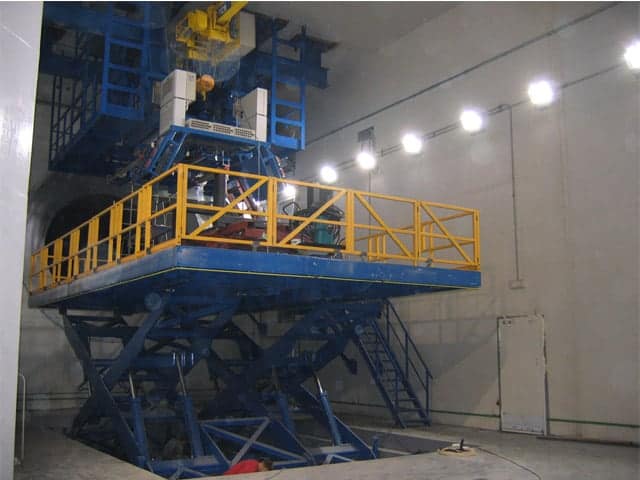
The Role of Scissor Lifts in Aerospace Engine Testing
Aerospace engine testing requires careful attention. It is essential to follow the strict operating rules outlined by your OEM and attend the provided training sessions. Scissor lifts help create a safe space for these tests. Scissor lifts provide a stable platform for the engine, equipped with customized tooling to accommodate multiple engine types. This helps engineers to adjust position easily. It allows for thorough inspections and performance checks.
Handling Specialty’s scissor lifts use high-quality components and meet ANSI standards. This makes them reliable for tough jobs. The strong design ensures they can manage the powerful forces released during engine testing, including high thrust and vibrations.
The lifts also have special reservoirs for hydraulic fluid and other key parts. This design focuses on safety. It helps reduce leaks or spills while working. Due to this focus on safety and compliance with industry standards, scissor lifts are crucial in aerospace engine testing.
Why Custom-Engineered Solutions are Essential
Standard heavy-duty scissor lifts are strong and reliable. However, testing aerospace engines requires unique designs to meet special needs. Engine sizes, weights, and tests vary, which means lifts must be specifically designed for optimal performance.
Custom-made scissor lifts can fit different weight limits, lifting heights, and platform sizes. For example, larger engines might need high-pressure hydraulic cylinders that work above 10,000 psi. Custom lubrication systems can also be used. These systems help keep everything running smoothly and last longer, even in harsh conditions.
These custom features give the needed flexibility. They help the lift work well with current testing setups, improve testing steps, and ensure results are accurate and trustworthy.
Design Features of Custom-Engineered Scissor Lifts
Custom-made scissor lifts for testing aerospace engines feature special design elements that prioritize stability, accuracy, and safety. These features are carefully selected and assembled to meet the needs of engine testing. This helps make sure operations are steady and effective.
From pit mounting to strong parts and smart hydraulic systems, every detail is carefully thought out. This planning is designed to manage the demanding task of lifting, lowering, and holding heavy engines while they are being tested. These design choices, including sensors, lights, alarms, and limit switches, are crucial for maintaining safe testing while protecting workers.
LDLT-Style Scissor Sets for Stability and Capacity
Custom-made scissor lifts often use LDLT-style (Low Deflection, Long Travel) scissor sets. These sets improve stability and allow the lift to carry more weight. This design reduces bending when heavy loads are present. It keeps the platform level as the lift moves up and down.
The LDLT structure has a broader base and strong support beams. This helps to spread the weight evenly across the lift. It lowers the strain on each component of the lift, which helps to prevent bending or twisting. This is very important when lifting heavy aerospace engines. Even slight bends can affect test results and safety.
With the added stability of LDLT-style scissor sets, the lift can hold engines precisely during tests. This helps in receiving accurate measurements and dependable data.
Cross Brace Members for Level Lifting and Safety
Cross brace members are key parts of specially designed scissor lifts. They offer extra support and stability to the platform while it lifts. These parts connect the two scissor arms across from each other. This connection makes the lift stronger and reduces side-to-side movement. This way, the platform remains level and stable, even when the load is uneven or when external forces act upon it.
The benefits of using cross-brace members are:
- Better Stability: They help reduce twisting and swaying when lifting. This is crucial for delicate engine components and precise measurements.
- More Safety: By keeping the platform from tilting, cross brace members lower the chance of accidents due to unstable loads or sudden weight changes.
- Better Load Sharing: They help spread the load of the engine more evenly across the lift, which lowers stress on individual parts and allows the lift to last longer.
Mechanical Linkages and Synchronization for Precision
Precise mechanical links and synchronization systems are crucial for accurate lifting in custom-made scissor lifts used for testing aerospace engines. These systems ensure that all lifting points work in tandem, maintaining the platform’s stability during lifting.
Advanced hydraulic or electromechanical systems control how each scissor leg moves. They synchronize their stretching and pulling to prevent uneven lifting or tilting. This precision is key for protecting sensitive engine parts and ensuring exact alignments during testing.
Importance of Synchronizing Tubes Between Scissors
Maintaining level lifting is paramount in aerospace engine testing, as any tilting can affect engine performance readings and potentially damage sensitive components. This is where synchronizing tubes play a vital role.
These tubes connect the hydraulic cylinders of different scissor legs, ensuring that they extend and retract at the same rate. This synchronized movement keeps the platform level throughout its travel range, even under heavy or uneven loads.
Here’s how synchronizing tubes ensure level lifting:
| Feature | Benefit |
| Hydraulic Fluid Transfer | Enables seamless fluid flow between connected cylinders, maintaining equal pressure and synchronized movement. |
| Equalized Pressure Distribution | Prevents one side of the lift from rising faster than the other, ensuring a stable and level platform. |
| Reduced Wear and Tear | By minimizing stress on individual cylinders and components, synchronizing tubes enhance the longevity of the lift. |
Ensuring Longitudinal and Lateral Level Lifting
Level lifting in both the front-to-back and side-to-side directions is significant for safely and accurately testing aerospace engines. Custom lifts employ various mechanisms to achieve this.
For front-to-back lifting, a long platform supported by several synced scissor legs helps spread out the weight evenly. This prevents the platform from tilting forward or backward while being lifted.
For side-to-side lifting, cross-brace members and well-aligned scissor arms help keep the platform level, even if the engine’s weight isn’t centered. These features ensure the engine remains stable and secure during the testing process.
Conclusion
In conclusion, the design features of heavy-duty scissor lifts are essential for safety and accuracy in aerospace engine testing. Custom-made solutions, such as LDLT-style scissor sets and mechanical linkages, enhance stability and precision during tests. It is crucial to recognize the value of these features to achieve effective engine testing results. When aerospace engineers focus on safety and precision through specially designed scissor lifts, they can improve the quality and dependability of their testing methods. This helps meet the high demands of the aerospace industry.
Frequently Asked Questions
What Makes a Scissor Lift Explosion-Proof?
Explosion-proof scissor lifts are crucial in areas where flammable materials are present. They are designed to prevent sparks from occurring inside. These lifts follow ANSI standards for explosion-proof tools. They have sealed components, such as motors, wiring, and control systems. This design helps prevent any sparks that could cause a fire in risky areas.
How Do Custom Scissor Lifts Enhance Aerospace Engine Testing?
Custom scissor lifts offer tailored solutions with specialized platform sizes and adjustable height options. Their robust design features solid steel legs and sturdy components, capable of supporting a wide range of engine sizes and weights. Also, they meet ANSI standards for safe and effective testing procedures.

